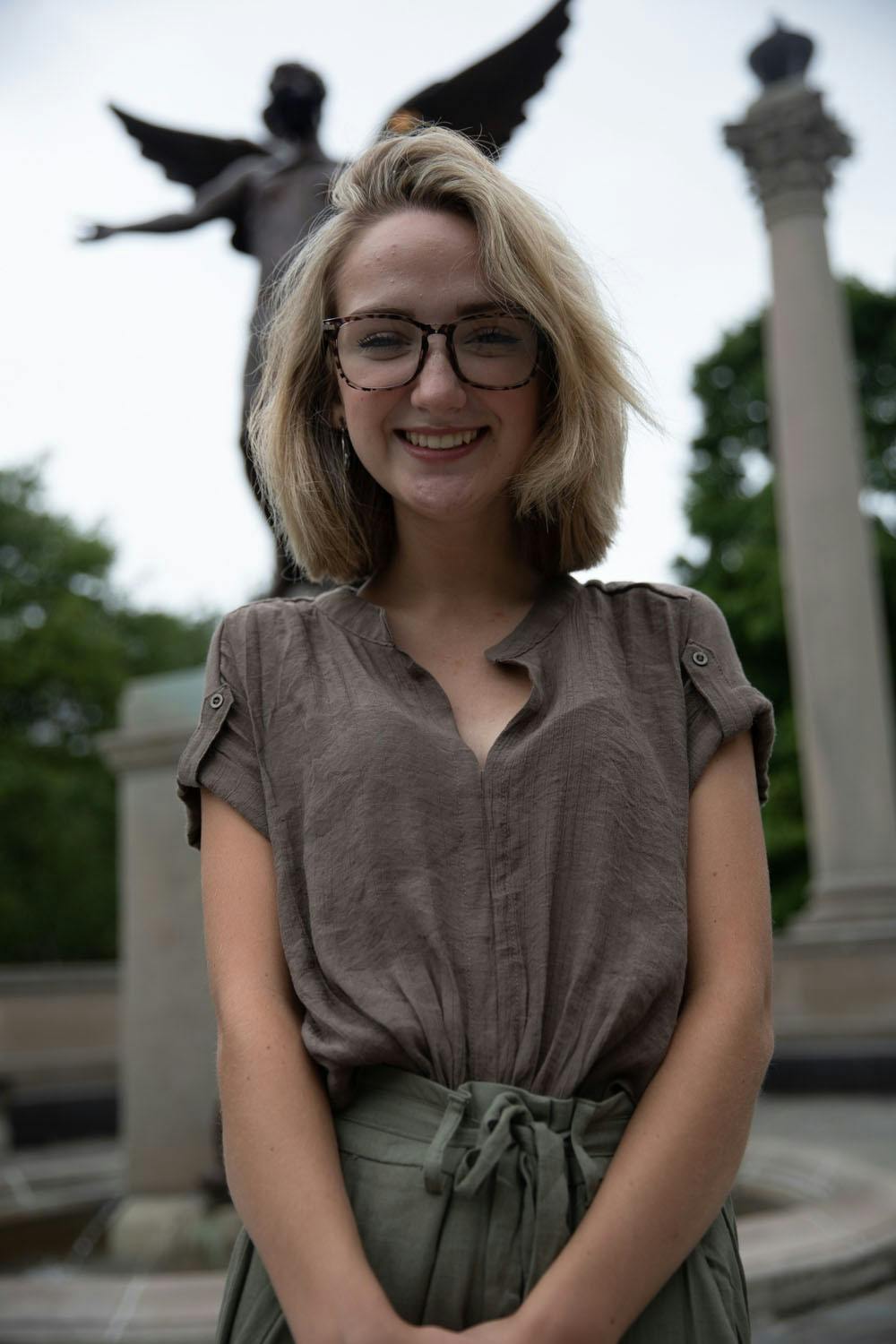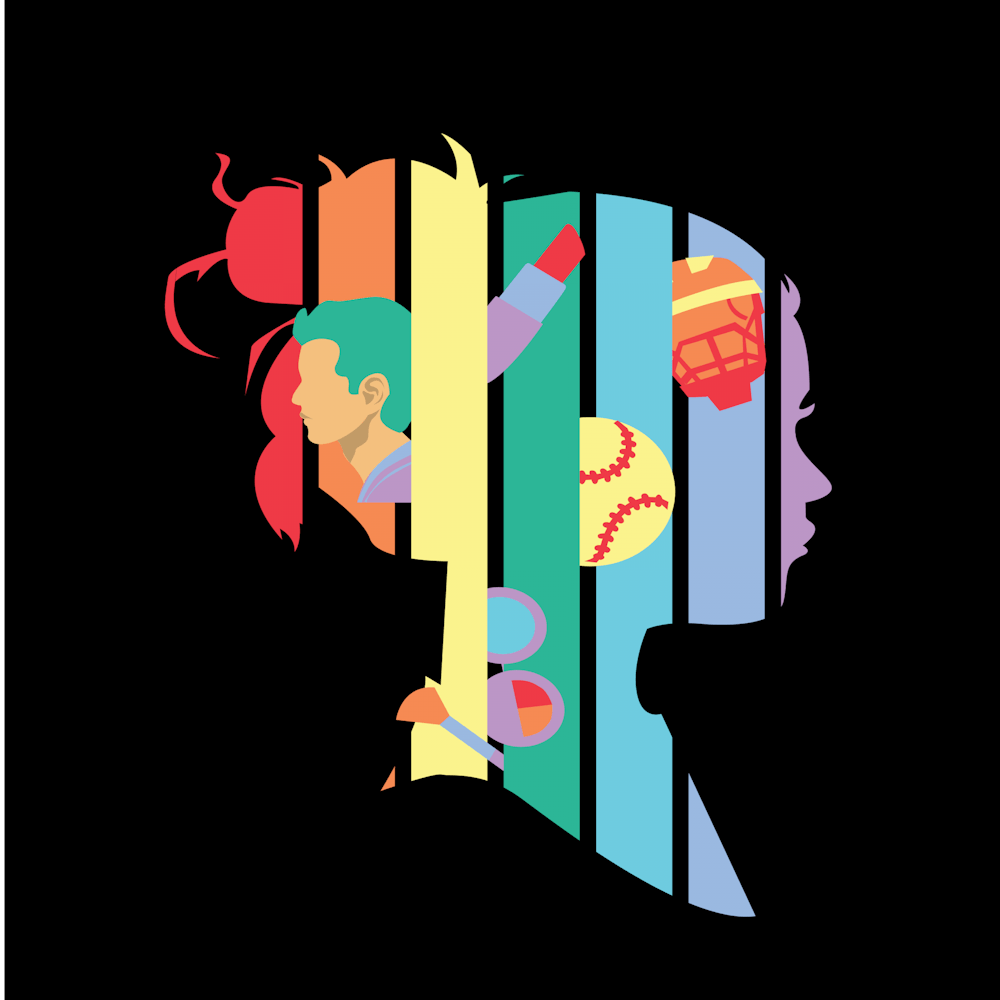
Kamryn Tomlinson is a junior news journalism major and writes “Toadstool” for The Daily News. Her views do not necessarily reflect those of the newspaper.
I was 4 years old when I started going to my Aunt Jennae’s high school softball games. It was the time of year when the sun wasn’t quite warm enough on its own, so my parents had bundled me and my brother in our school-spirited attire. I sat “snug as a bug in a rug,” as my dad used to say, wrapped in a blanket in the safety and warmth of his arms.
The smell of popcorn lingered under our noses as I watched my aunt. She was the one I looked up to most. I admired her every move.
She looked back from her position behind the plate, unrecognizable in her catcher’s gear. She waved her hand at me, mitt still attached.
Every time I looked at her, she had her mask on.
I was 5 years old when Jennae attended prom. My mom went to my grandparents’ house to do Jennae’s hair and makeup for the dance. I studied the way my mom brushed a light pink shade onto Jennae’s cheeks and painted gloss on her lips. In complete admiration of my aunt, I insisted my mom give the same makeover to me. As much as I wanted to be her, Jennae wanted to be me: a naked face, free from any mask.
She was wearing hers again, but she looked so beautiful.
I was 9 years old when she brought Tom home. They became friends during her time in the U.S. Army. Jennae decided to bring him home for Thanksgiving. I believed her when she said he was just a friend, but my family members weren’t convinced.
But what else were they supposed to think? They were still seeing a mask, even when one might not have been there.
I was 13 years old when Jennae got back from deployment. There, I met Stacy. Jennae introduced her to me as “a friend who was dog-sitting.”
“Dog-sitting?” I thought. “Bullshit.”
My adolescent mind was quickly at work. Then, the carousel of thoughts and memories began.
Watching her head turn to me as she kneeled behind home plate with her strawberry-blonde hair sticking out the sides of her catcher’s mask, the only indication the woman I was looking at was my aunt.
The time I saw the sliver of discomfort peek through her mask as she stood painted in a full face of makeup and a gown that looked like it was made for someone else.
The anger in her voice as she told our family for the 100th time Tom was just a friend. Her face may have been masked with irritation, but the tone in her voice made every mask she’s ever worn around me disappear. Her voice quivered with a mixture of anger and frustration as she struggled to speak every word racing through her mind. Her hands shook in fear and impatience at the situation she was facing. She was experiencing something so intensely, and, in that moment, I knew exactly what it was.
It finally made sense. She was gay.
I grew up admiring Jennae — everything she did, everything she tried to hide. I thought homosexuality was a societial norm, and, because of the a progressive and inclusive generation I am a part of, it has always been hard for me to understand why some of the people closest to me, including my aunt, didn’t acknowledge her sexuality.
Some suppressed her sexuality, bringing forward a new mask for every new encounter they had with Jennae and what she was hiding behind them.
Jennae’s masks were a touchy subject for me growing up. It hurt me to know she didn’t feel like unmasking often — like I wouldn’t accept her, believe her and love her for her. But, somehow, I still understood why a mask was around anytime I saw Jennae. She was facing a world that thought the most natural version of herself was “unnatural.”
There was one feeling for me that remained stagnant —I was confused. There was always a whirlwind of opinions flying around me about the rights and wrongs of sexuality, and I constantly asked, “Who cares?” I never understood what was wrong about loving another person, something we are all too familiar with.
No one should have to feel the need to hide the realest parts of themselves — to mask the person they were always meant to be — simply because society has added a negative connotation to any sexual orientation that wasn’t straight or “traditional.”
Love is not limited to only being true when it is felt between a man and a woman. Love is a feeling, and feelings do not care if you are black, white, gay, straight or transgender. Love is as simple a feeling as happiness or sadness, something that can be felt in anybody despite who sparks it inside of them.
Love is something everyone experiences, and just because everyone experiences it differently doesn’t justify putting limitations on who people are allowed to love. If it isn’t socially acceptable to tell someone how to be happy or sad, how is it OK to tell someone how to love — who to love?
I can only speak for myself, but it doesn’t quite sit right with me that those who have the most colors also feel the need to wear the most masks.
Contact Kamryn Tomlinson with comments at kptomlinson@bsu.edu or on Twitter @kamrynwrites.





